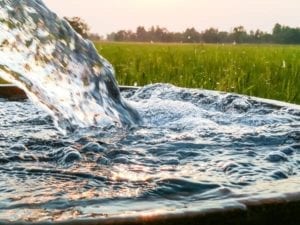South Africa’s dam levels have risen to nearly 70%, a sign that large parts of the country will not relapse to the dry conditions that it experienced four years ago during the drought.
However, statistics show that the average levels have dropped by 8% compared to the same period last year. The latest weekly report by the Department of Water and Sanitation estimates the country’s total water storage at 22 203,9 cubic metres, a three-third of the total capacity in all the reservoirs. This is an indication that there will be enough water for domestic and industrial use until we experience rainfall, later in the year. However, despite the good news, the department reiterates its call for all consumers to be circumspect in their water usage because the slightest negligence may result in water shortages before the wet season arrives. At the moment only Western Cape dams are nearly full, owing to the heavy showers that have fallen in large parts of the province recently. The report suggests that Free State, with its large dams such as Gariep, continues to store the biggest volumes of water at 12 890,8 cubic metres. Sterkfontein Dam which is touted as South Africa’s reserve bank of water because of its depth and proximity to Drakensberg Mountains, is storing a whopping 92,2% water. Four years ago Sterkfontein came to the rescue of Vaal Dam after the latter had dropped its levels to an alarming 38%. The report paints a gloomy picture of the water situation in Eastern Cape, where dam levels were recorded at 56% this week. Butterworth residents continue to suffer acute water shortages after Gcuwa Dam dried up at the beginning of this month. Irate residents took to the streets and blocked N2 Freeway which passes through the town.The local municipality has resorted to water tankering as a temporary measure to supply locals with water for basic use.
Mpumalanga is in the middle of the table with its latest dam levels recorded recorded at 66,9%. This is a drop by 9% compared to the same period last year when levels stood at 77,8%. The Department of Water and Sanitation has budget several millions of rands to alleviate a desperate water situation in Nkangala and Bushbuckridge that have been plagued by perennial water problems from the days of yore. To prepare for worst moments, the province has hitherto stored 1 697,8 cubic metres of water. In the Highveld towns of Emalahleni, Middlelburg and Kriel the pollution of groundwater by coal mines is rampant, the department is planning to take drastic measures to compel the culprit mines and other industries to stop their negligence. It is estimated that 90%, the size of Witbank Dam alone, of groundwater in the Highveld is contaminated by malcontent industries. Also, the department will soon crack the whip among municipalities that cannot operate their waste water treatment plants that have spilled into yards and streets of most towns.







